Types of Plastic - A Complete Plastic Numbers Guide
Whether we like it or not, we are all living in a world full of various types of plastics. If you open the fridge or simply look around, you will spot dozens of plastic items that you use every day. Have a closer look and you will notice a recycling symbol at the bottom, top or side of each plastic object. This recycle sign looks like a triangle of chasing pointers with a number from 1 to 7 inside it. The recycle symbol provides important data about the used resin and recyclability of the item. Keep in mind that plastic recycle code on the object does not surely mean that the item can be reprocessed. It just shows the information about the recycling possibility.
It seems almost impossible to escape plastic in the modern consumer world. Still, we can make a better choice by choosing safer for our health and environment types of plastic. Therefore it is crucial to understand the potential harm of the elements of different plastics.
To make a long story short: plastic recycling numbers 2, 4 and 5 are the safest. Whereas plastic numbers 1, 3, 6 and 7 must be avoided. But it does not indicate that you can fearlessly use safer plastic. All plastic products can leach toxic chemicals when heated or damaged. Thus, the best choice is to move to other materials like metal and glass where possible.

Source: codepen.io
Below you will find more information about 7 types of plastic with the examples of their use and possibility of recycling. Still, you should always check the facilities of local waste recycling factories as far as many of them do not recycle all recyclable plastics.
#1 plastic: Polyethylene Terephthalate
Plastic number 1 refers to polyethylene terephthalate which is one of the most generally used thermoplastic polymer resin. We know it as PETE or PET plastic. What is PET plastic in our daily life? Well, plastic 1 is most frequently used in water and beverages bottles, food jars and containers, salad dressing and oil bottles, clothes fiber, mouthwash bottles. Plastic #1 is usually clear in color and it is not intended for multiple uses.
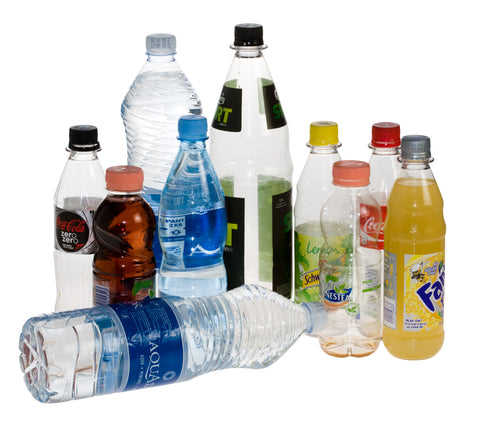
Source: compactor-runi.com
PET plastic safety
As we have mentioned: PET 1 plastic is used in much disposable food and drink containers so we interfere with it quite often. Therefore it is crucial to understand a few things:
- PET plastic is rather safe for food and drinks packaging
- You can only use PETE plastic one time. It has got a porous structure so you need strong cleaning products. These products will cause carcinogens leach.
- Never heat PETE 1 plastic as this causes antimony leach which is a toxic chemical.
Recycle 1 plastic
The good news is that PET plastic is easy to recycle. Thus it is accepted at most recycling plants. The plastic items are shredded into tiny pallets and reprocessed into new bottles. Recycled PET bottles can also be turned into polyester fiber. This fabric is applied for producing fleece clothes and carpets or to stuff sleeping bags, jackets, pillows.
#2 plastic: High-Density Polyethylene
Plastic 2 is one of the safest sorts of plastic. Also called HDPE (high-density polyethylene), it has got a high strength-to-density ratio which results in superb wear resistance. HDPE products withstand heating and freezing so they can be used in various weather conditions. Plastic number 2 can be reused without any harm. The durability and reliability of HDPE 2 make it efficient to use in the manufacture of various items like:
- Sturdy bottles for cosmetics and household cleaner
- Stools, chairs, sunbeds for outdoor use
- Toys and playground equipment
- Some plastic bags
- Flexible pipes
- Bottle crates
- Rope
- Plastic envelopes
- Water, juice and milk jugs
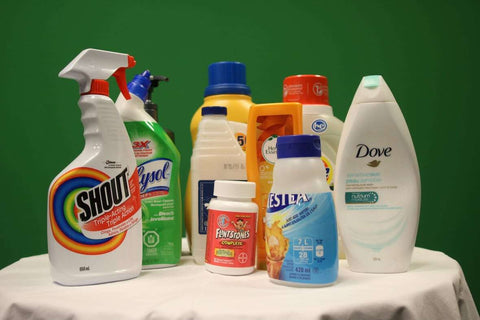
Source: i.cbc.ca
HDPE 2 recycling
Recycle logo plastic #2 means that it can be easily and efficiently recycled up to 10 times. Clear containers from HDPE 2 plastic are recycled back into the same new containers. Colored HDPE 2 is turned into many other items like pipes, lumber, toys, lawn, pens, floor tiles.
#3 Plastic: Polyvinyl Chloride
Plastic 3 is not going to be among safe recycling codes. Known as PVC (polyvinyl chloride), this is very dangerous and one of the least recyclable plastic. Still, plastic number 3 is as widely spread as PET plastic. PVC recycle number means that the item is strong and elastic due to softening chemicals, – phthalates. They cause great problems with the hormonal system. Some other highly toxic chemicals like DEHA can be produced during the whole plastic #3 lifecycle. They affect the children’s development, immune and endocrine system. These harmful chemicals also cause cancer.
Number 3 plastic can be found in shower curtains, cleaner bottles, pipes, cooking oil bottles, window and door frames, floors, clear food wrap.
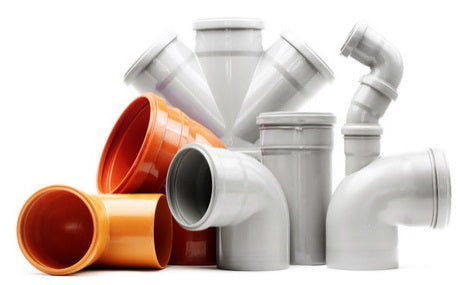
Source: omnexus.specialchem.com
Is PVC toxic when heated? Definitely, yes. So never use #3 plastic for cooking and try not to store food in it. Check the material of the baby toys and inflatable items to make sure they do not contain PVC.
PVC plastic recycling is almost impracticable because of different additives. Try to use #3 plastic as seldom as possible.
#4 Plastic: Low-Density Polyethylene
Plastic 4 or LDPE (Low-Density Polyethylene) is a thermoplastic and one of the oldest grades of polyethylene. LDPE 4 is believed to be rather safe for using, still, it is not environmentally friendly as only a small percent of LDPE 4 plastic is recycled. Some plants accept plastic number 4 but there are really few. LDPE can be changed then in lumber and floor tiles.
Comparing to HDPE plastic, plastic #4 is more elastic and is usually used as:
- Bread wrapping
- Squeezable bottles
- Shopping bags
- Packaging foam
- Trays and containers
- Other plastic wraps
Is LDPE food safe? Yes, 4 is among safe plastics numbers. Taking into account the low 4 plastic recycling facilities, you should reuse LDPE 4 plastic at least a few times before moving it to a garbage bin.
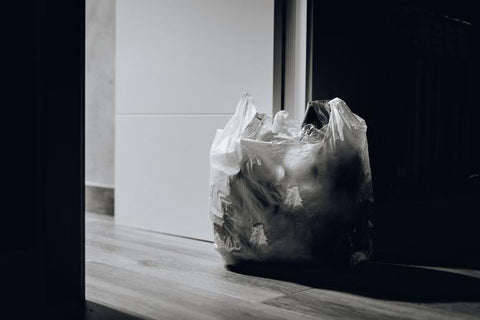
#5 Plastic: Polypropylene
Plastic number 5 or PP plastic (polypropylene) is the second-most widely produced plastic. Being light, heat resistant and sturdy, PP is applied to various packaging. Today plastic 5 is commonly used in:
- Yogurt containers
- Liner in cereals boxes
- Disposable diapers
- Plastic bottles tops
- Kitchenware
- Disposable plates, cups, cutlery
As far as plastic #5 is frequently used in food packaging, people often wonder about PP interaction with human bodies. Is polypropylene safe? Is PP 5 plastic microwave safe as it is usually mentioned? Well, recycle number 5 is considered to be the microwave-safe symbol but it just means that the heated product will not be deformed in the microwave. Some studies prove that even microwavable safe plastic can cause asthma and hormone disruption so it is better to substitute plastic containers with glass.
It is advised to reuse PP 5 plastic because even though some factories recycle 5 plastics, the total percentage of recycled plastic is not more than 3%. Hopefully, more attempts are made to recycle 5 PP more and make it as effective as with other recyclable plastics
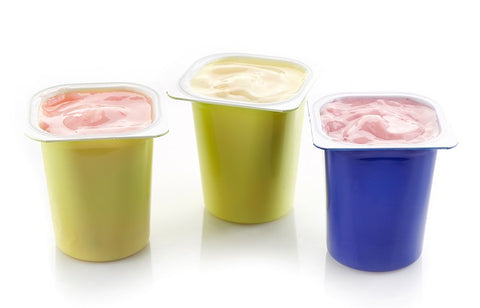
Source: recyclenation.com
#6 Plastic: Polystyrene
Number 6 plastic stands for polystyrene (PS) or styrofoam. This is one of the plastic recycling codes that must be avoided or, at least, reused as it is hard to recycle 6 plastic.
6 plastic is cheap to produce, lightweight and it can be easily formed. We meet it in the form of rigid polystyrene and formed styrofoam. Plastic #6 is widely applied to packaging and insulation. So PS 6 plastic can be found in:
- Disposable drinking cups
- CD, DVD cases
- Egg cartons
- Food containers to-go and disposable cutlery
- Insulation, including building insulation
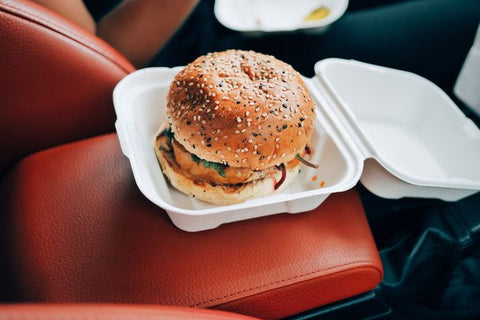
The problem with plastic number 6 is its fragility: it breaks up easily and goes to the environment. Tiny pieces of PS can be found at many beaches and in marine creatures. Moreover, #6 plastic contains styrene which can be leached while heated. It is harmful to health and can cause carcinogenic effects.
It is possible to recycle number 6 plastic but it is not available and practiced everywhere. Taking into account fast widespread of polystyrene in the environment, people started creating more facilities to recycle 6 PS. Still, now it is more preferable to collect and reuse number 6 plastic.
#7 Plastic: Other
Plastic 7 is actually everything else that does not refer to described above plastic recycling codes. Plastic number 7 includes new plastics, bioplastic, and items composed of different types of plastics. This recycling logo also stands for polycarbonate (PC) which contains highly dangerous BPA (Bisphenol A). Try to avoid products with the PC label. Recycle number 7 can be found on these items:
- Sport bottles and equipment
- Car parts
- Baby bottles
- Medical and dental equipment
- Electrical wiring
- Lids
It is hard to recycle 7 plastic and most factories do not accept it. There are no standard protocols for using and reusing this plastic so you should better opt for recycling numbers 1,2,4 and 5.
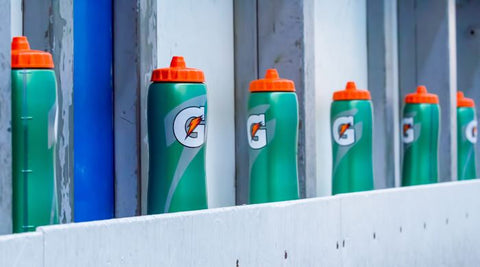
All in all
Even though it is almost impossible to avoid plastic in modern society, try your best to choose other materials or, at least, opt for safer classes of plastic. Volunteering is another great option to fight with plastic!
Remember that #2, #4 and recycle symbol 5 are relatively safe to use. Still, try not to heat them and do not put into microwave even if they are microwavable safe. Products with #3 plastic recycling numbers, as well as with recycling codes 6 and 7, must be rarely used, especially with food and drinks. #1 plastic isn’t very bad but you must store it in a cool environment and it shouldn’t be reused.
Another important question is what plastics can be recycled. Try not to throw away too much plastic. Reuse it where possible and choose the plastics which are more likely to be recycled than left on the landfills.
Use plastic products with great caution. Here is a simple compilation table about 7 types of plastic.
_____________________
Buy eco-friendly straws at our online shop:
Cane straws - https://yesstraws.com/collections/cane-straws
Wheat straws - https://yesstraws.com/collections/wheat-straws



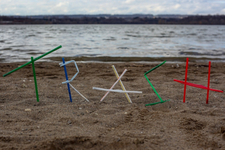
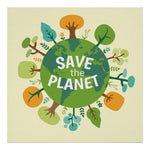
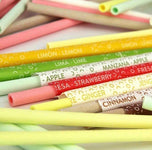

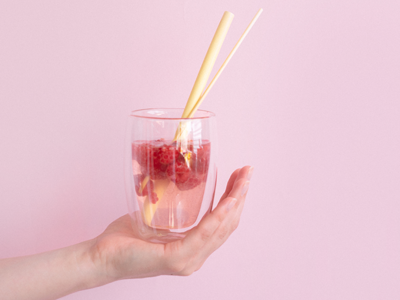
Thank you so much for this helpful, timely article! I’ve shared with my extended family too.